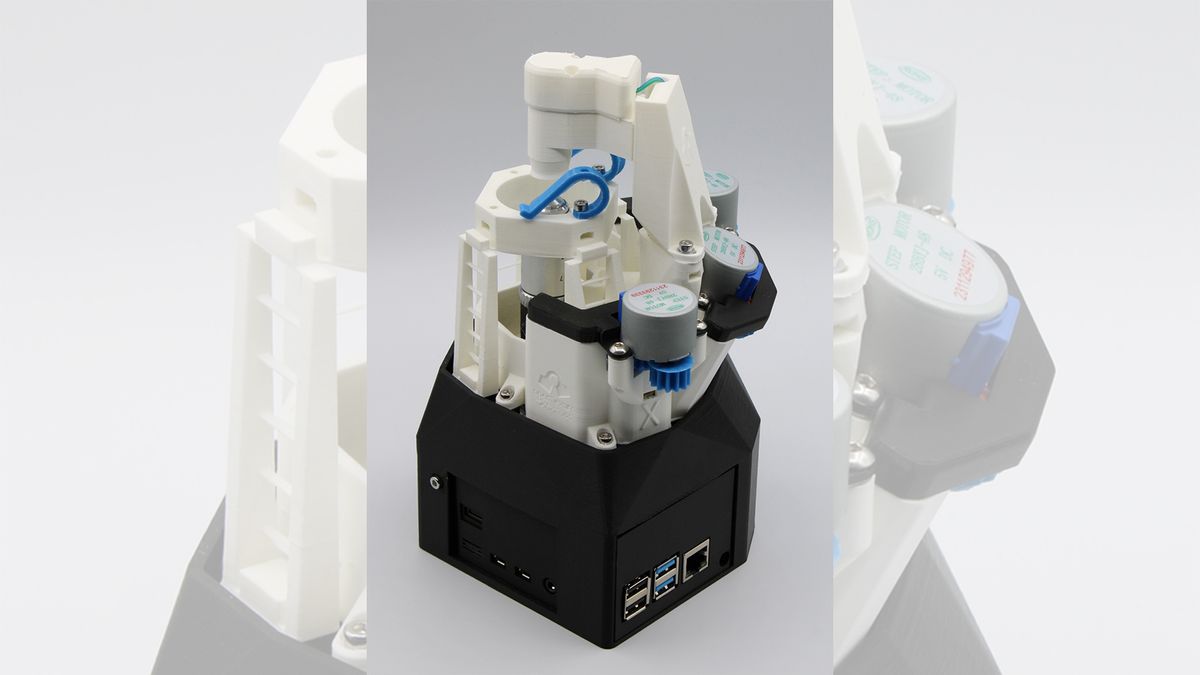Researchers 3D-print fully-functioning microscope in less than 3 hours — total system costs around $60, including lenses, camera, and Raspberry Pi
Let's bring microscopes to the masses.

Researchers from the University of Strathclyde in Glasgow, Scotland built a 3D-printed microscope in under three hours at a total cost of less than GBP 50 (around $60 at current exchange rates). According to New Scientist, the team based their design on OpenFlexure’s open-source microscope design and then paired it with a store-bought camera, a light source, and a Raspberry Pi to control the entire system. However, the groundbreaking part of this low-cost 3D-printable microscope is the use of 3D-printed clear plastic lenses that the research team built.
Traditional lab-grade microscope lenses often cost thousands of dollars, meaning this design makes microscopes far more accessible to anyone. We’ve previously seen DIY Raspberry Pi microscopes that can take impressive close-up photos; while they’re useful for imaging small fine objects, they’re not capable of seeing at the cellular level. In 2022, computer scientist Gary Croft created a high-quality microscope camera that captures images from a microscope. While this is far more affordable than other microscope cameras at just GBP 85 (around $105), it still doesn’t include the price of a Raspberry Pi (which starts at $35) and the trinocular microscope itself (which costs more than $250 on Amazon).
So, producing a microscope that can capture images at the cellular level for less a quarter of the price of “cheap” microscopes on Amazon is an amazing feat. Aside from that, the microscope itself weighs around three kilograms or 6.6 pounds, so you can easily move it around to where it’s needed. The researchers who built the system were able to examine a blood sample and a mouse kidney sample, and they could see sub-cellular and anatomical details that the earlier Raspberry Pi microscopes couldn’t.
This level of quality makes the 3D-printed microscope such a game changer, as it reduces the cost of acquiring one. While a microscope such as this is just a novelty to the average user, it’s crucial for hospitals, laboratories, schools, and more — and its massively reduced price means that even the most cash-strapped organizations could now acquire one, or more.
Aside from the above, this device's 3D-printable nature will help save on logistics. People who need this tool no longer must wait days (or sometimes weeks) to get this microscope. As long as there’s a nearby 3D printer, the required filament, electricity, and an internet connection, you can print this practically anywhere. This makes it a lifesaver in far-flung areas with limited to no access and during large-scale emergencies and disasters.
Stay On the Cutting Edge: Get the Tom's Hardware Newsletter
Get Tom's Hardware's best news and in-depth reviews, straight to your inbox.

Jowi Morales is a tech enthusiast with years of experience working in the industry. He’s been writing with several tech publications since 2021, where he’s been interested in tech hardware and consumer electronics.
-
edzieba Paper here: https://opg.optica.org/boe/fulltext.cfm?uri=boe-15-4-2224&id=547689Reply
Lenses were produced by SLA printing in a clear resin, followed by postprocessing by spin-coating the curved side with resin and then curing, followed by spin-coating a glass slide and placing the flat side on the lens on it and curing again (suing vacuum to eliminate bubbles between the printed lens and slide). -
AkroZ Yeah, you can't print it anywhere and in no times. But it's true that this new process to make lense is less complex to setup than with glass, meaning less costly.Reply -
Skramblr Either I'm really ignorant or the author is embarrassing himself as he insinuates I can take the 3D files over a any 3D printer and get a usable microscope. Ands with the limited functionality of this device, it's not going to replace any of the microscopes that I've used at work.Reply -
circadia Reply
the point of those 3D-printed microscopes is NOT replacing professional ones for laboratories doing serious research, it's for home/personal use, teaching kids how cells look like, or hospitals in poorer nations that cannot afford expensive equipment...Skramblr said:Either I'm really ignorant or the author is embarrassing himself as he insinuates I can take the 3D files over a any 3D printer and get a usable microscope. Ands with the limited functionality of this device, it's not going to replace any of the microscopes that I've used at work. -
circadia Reply
I don't know much about 3D printing hardware, which hardware is actually suitable for printing those lenses?AkroZ said:Yeah, you can't print it anywhere and in no times. But it's true that this new process to make lense is less complex to setup than with glass, meaning less costly.